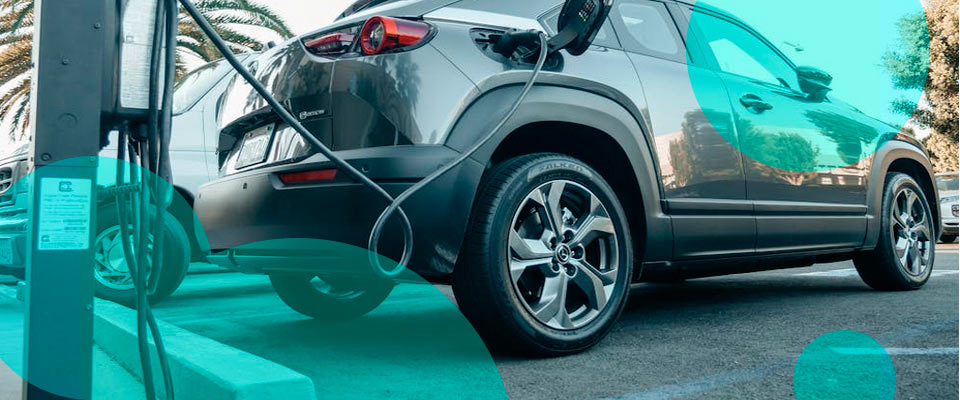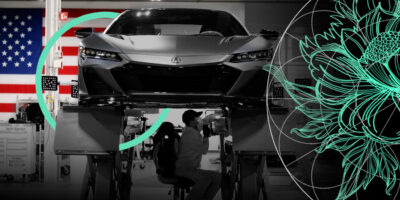Overview
Motor insurers are ramping up their presence in the UK’s electric vehicle (EV) segment as battery electric vehicles (BEVs) continue to capture a growing share of new car registrations.
According to Consumer Intelligence, 11 new EV insurance products launched on a major comparison site in 2024—significantly outpacing the three to four new products for petrol, diesel, and hybrid models. Beinsure analyzed the report and highlighted the key points.
New offerings often include EV-specific features, such as charging equipment cover, tailored breakdown services, and optional carbon offsetting.
The shift reflects broader market movements: new BEV registrations in the UK rose 35.2% year-over-year between January and April 2025, while petrol sales declined by 10% and diesel by 13.2%, according to data from the Society of Motor Manufacturers and Traders.
UK’s commercial motor sector is showing slow progress in adopting EVs

But the UK’s commercial motor sector is showing slow progress in adopting electric vehicles (EVs), with implications for insurers already navigating rising claim costs and evolving risk profiles.
Insurers are adapting to this momentum across multiple markets. Analysts forecast the hybrid and EV insurance market to grow at a 16.9% compound annual rate through 2030. Insurers are updating pricing models and expanding product lines in response to this long-term shift toward electrification.
Premiums for EV insurance cover have started to stabilize after sharp increases in 2023. Consumer Intelligence credits this to a more established repair network and improved claims data, which have enabled insurers to assess risk more accurately.
EV drivers are now seen as presenting a risk profile more aligned with internal combustion engine motorists.
Some insurers have reduced EV premiums by as much as 18%, according to UK insurance market report. One provider boosted its quotability rate by 40 percentage points, resulting in a 12% increase in its top-five presence on the comparison site.
Despite these gains, affordability remains a major concern
The average annual premium for an EV stands at £996—roughly 54% higher than the average for petrol or diesel vehicles.
High upfront costs (reported by 61% of consumers), battery durability concerns (37%), and limited charging infrastructure (36%) continue to slow adoption.
EV repairs remain costly due to battery prices and repair complexity. Although BEVs are typically involved in fewer accidents, the average claim size tends to be higher.
Regional pricing disparities persist; in April, premiums in the South East exceeded those in the North West, driven by differing congestion, theft rates, and claims frequency.
In the commercial motor insurance sector, EV uptake is slower

Fleet operators face different challenges, including managing charging logistics, potential downtime, and the added expense of maintaining specialist vehicles.
These factors require insurers to approach commercial EV risk differently than personal use cases.
Insurers are no longer treating BEVs as niche risks.
As EV adoption broadens, pricing is becoming more competitive.
Electric vehicle sales are still just shy of the government’s 22% Zero Emission Vehicle mandate target, but the trend is clear. Growth is accelerating, and insurers are moving quickly to adjust.
Ian Hughes, CEO of Consumer Intelligence
As EV penetration rises, so do the challenges insurers face in underwriting these tech-heavy, high-torque machines – especially when it comes to the rising costs of repair.
According to Yvan Berthou, head of motor group underwriting at Zurich Insurance Group, the market has already changed.
“Initially, it was not uncommon for EVs to receive premium discounts,” he said, “but this has shifted due to their unique risks and repair costs.”
Insurers face mounting pressure amid slow EV adoption

According to the latest Broker Barometer from Direct Commercial Limited (DCL), just 13% of brokers said their clients were adapting well to electric or hybrid vehicles, while 44% reported limited or no progress.
The findings point to particular difficulties in the heavy goods vehicle (HGV) segment, where barriers around vehicle availability, charging infrastructure and range remain unresolved.
Only 9% of brokers said their clients were somewhat prepared for incoming sustainability regulations, such as the Government’s Zero Emission Vehicle (ZEV) Mandate. Another 25% described operators as unprepared.
While electric light commercial vehicles (LCVs) account for roughly 7% of new registrations, they still represent a small share of total fleets and insurers are facing rising loss costs as a result.
Research from industry bodies shows EV claims are typically 25% to 30% more expensive and take longer to resolve, largely due to the high cost of battery components, repair delays and limited availability of specialist repairers.
EV insurance gets complicated as repair costs climb

The rising cost of EV repairs stems primarily from the vehicle’s most valuable and complex part: the battery.
It represents a large share of the vehicle’s total cost and introduces risk factors unique to electric models.
While EVs don’t catch fire more often than internal combustion engine (ICE) vehicles, battery-related incidents carry higher severity due to thermal runaway. This makes battery repairs not only costly but also risk-sensitive.
The battery is only one part of the problem
Most EVs are newer and equipped with advanced driver-assistance systems (ADAS). These systems require expensive components like sensors and radar units. Calibration costs add another layer of expense, and skipping these steps isn’t an option.
Supply chain instability adds pressure
Just-in-time manufacturing, once seen as efficient, now slows repair timelines. Delays in parts availability directly extend the time vehicles stay off the road.
FCA noted examples of responsible behaviour, especially in home and travel insurance, but also identified practices that could lead to poor outcomes for policyholders.
The FCA also found that only 32% of storm damage claims submitted to a sample of insurers in 2024 resulted in a payout, raising concerns over high rejection rates.
In addition, some insurers relied too heavily on cash settlements without properly assessing if this served the customer’s best interest.
Where it identified poor practices, the FCA is taking action directly with the firms and, where necessary, using its enforcement powers.
Driving behavior also contributes
EVs deliver instant torque, which can surprise first-time users. Misjudging acceleration increases crash risk, particularly among new drivers unfamiliar with the handling.
Directly comparing EV and ICE repair costs, however, can distort the picture. Usage patterns matter. Commercial fleets often choose EVs for fuel and maintenance savings over long distances. Private owners tend to use EVs for short commutes, generating lower mileage and skewing claim data.
Urban density affects risk as well
EV adoption is highest in cities, where charging stations are common but traffic is dense. That raises the likelihood of low-speed accidents. Short trips, especially at the start and end of drives, further increase minor collision rates.
- Not all EV-specific factors raise risk.
- Built-in GPS reduces theft.
- The lack of catalytic converters removes a common theft target, which remains a concern for ICE owners.
Repair costs remain high, but the gap is narrowing
As repair networks evolve, parts become more accessible, and insurers adjust their models, costs should align more closely with ICE vehicles over time.
So far, evidence on total loss rates remains thin. The current EV fleet is still small, and the number of total losses is low.
As adoption grows, early data suggest total loss risks will stay on par with traditional vehicles.
Industry observers point out that UK motor insurers are still refining how they underwrite EVs, particularly for commercial use.
Battery costs, repair complexity and total loss risks have made some vehicles unviable to insure, and brokers report tightening capacity for certain models. Some carriers have introduced telematics-based pricing to help manage risk across mixed fleets.
FAQ
Insurers are responding to the rising demand for electric vehicles (EVs), especially battery electric vehicles (BEVs), which now account for a growing share of new car registrations. In 2024, 11 new EV insurance products launched on a major comparison site, far outpacing products for petrol, diesel, and hybrid cars.
New policies often offer EV-specific benefits like charging equipment cover, tailored breakdown services, and optional carbon offsetting. These are designed to meet the unique needs of EV drivers.
Premiums have started to stabilize after sharp increases in 2023. This is due to better repair networks and improved claims data. Some insurers have even reduced EV premiums by up to 18%.
Consumers cite high upfront costs (61%), battery concerns (37%), and limited charging infrastructure (36%) as top challenges. Average EV insurance premiums remain 54% higher than for petrol or diesel vehicles.
The main cost drivers are battery repairs, calibration of advanced driver-assistance systems (ADAS), and limited availability of specialist repairers. Battery-related incidents also carry higher severity risks.
Commercial EV uptake remains slow due to challenges like charging logistics, downtime risks, and high maintenance costs. Heavy goods vehicle (HGV) adoption lags significantly, and insurers are facing increased loss costs for commercial fleets.
Not necessarily. While repair costs are higher, EVs are involved in fewer accidents and have lower theft risks. Built-in GPS and the lack of catalytic converters help reduce exposure. However, instant torque and ADAS complexity can raise crash and repair risks.
……………….
QUOTTED: Ian Hughes – CEO of Consumer Intelligence, Yvan Berthou – head of motor group underwriting at Zurich Insurance Group
Edited by Yana Keller and Nataly Kramer — Insurance Editors at Beinsure Media









